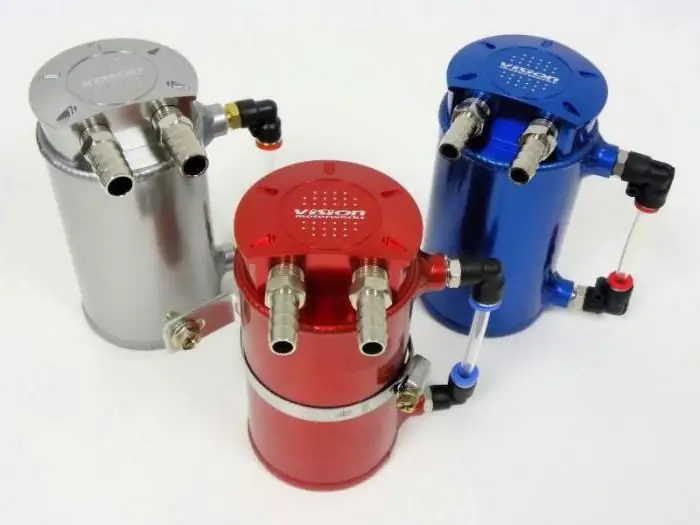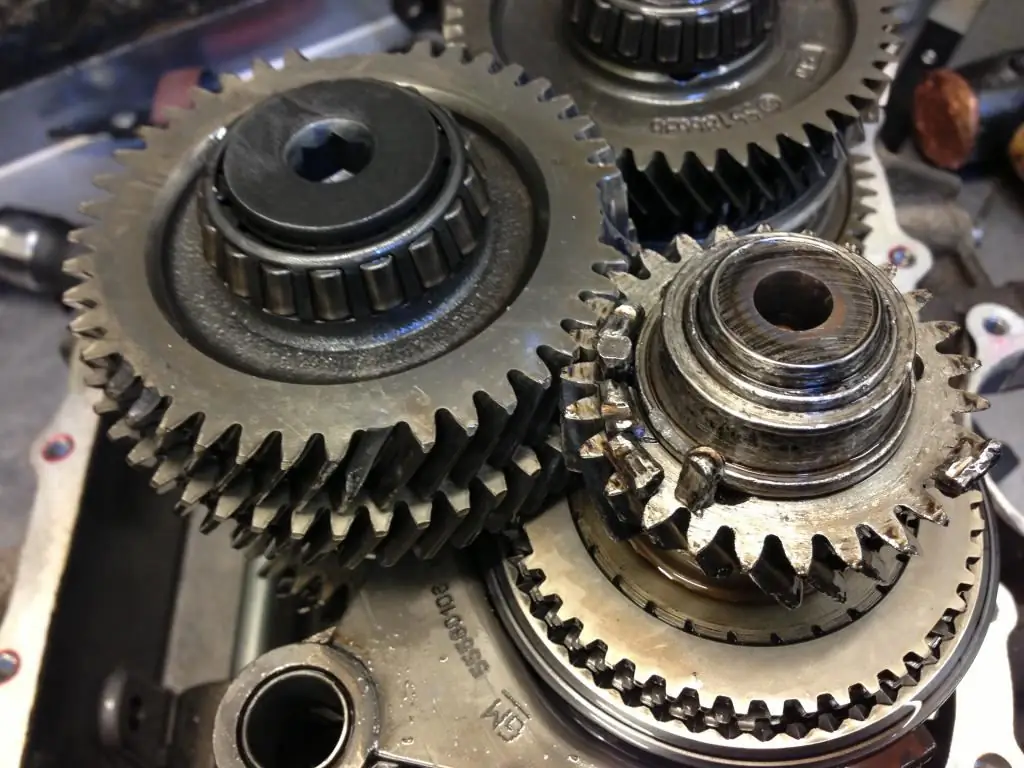2026 Author: Erin Ralphs | [email protected]. Last modified: 2025-01-22 21:14:11
Many car owners are wondering why a rough road sensor is needed and what functions it performs. This newfangled device appeared relatively recently, so it is not surprising that many motorists simply did not hear about its existence. Today, this tricky device is found on almost all modern domestic-made cars and on some foreign cars. So, what is the rough road sensor for and how does it work? This is what we will talk about today.
At a Glance
In fact, not all motorists know about the true purpose of the rough road sensor. So if you are one of them, don't fret. In fact, this strange device is surrounded by many rumors and even legends, with which car owners are trying to explain its presence in the device of their car.
Most often, motorists consider the main task of this sensor to be speed limiting while driving on rough roads. But in fact, this opinion is fundamentally erroneous and is not at all connected with the real purpose.devices. Remember: this device has absolutely nothing to do with the speed of movement on bumpy surfaces. And to be more precise, the sensor concerns this problem only indirectly. At least it won't signal if you go off-road at top speed.

Then what is the rough road sensor for? You may be surprised by the answer to this question. However, in reality, it is necessary to temporarily stop the cylinder misfire diagnostic system. In simple terms, it disables certain functions of the car so that the "check engine" light on the dashboard ceases to systematically light up.
The principle of operation of the rough road sensor
So, let's take a closer look at the purpose of this device and its functions. From the name of the sensor, it becomes clear that it somehow reacts to the bumpiness of the road. This is necessary for the improved operation of the knock sensor, which is installed on all engines, starting from Euro 3. In other words, knowing the environmental class of the car, you can understand if it has this device. At the moment of collision with an obstacle, the knock sensor reacts to incoming vibrations, taking them for dangerous manifestations. At the same time, it absolutely unreasonably makes the ignition slow.

As a result, the fuel partially burns out while in the catalyst and exhaust manifold, which negatively affects the condition of thesespare parts. In addition, the efficiency of the motor and other important indicators are significantly reduced. It is to prevent such phenomena that a rough road sensor is installed. It is triggered at the moment of hitting a bump and sends a signal to the controller.
How the device works
Where is the rough road sensor? Depending on the specific model of the machine, the device can be fixed on the suspension elements, frame or side member. It works according to the mechanism of a piezoelectric element, that is, it works exclusively on vertical vibrations. This makes it possible to effectively detect the passage of unevenness and report it to the appropriate controller in time.

Many car owners make the same mistake. If you disconnect the rough road sensor, you will not immediately feel any significant changes. But after a while, the usual fuel consumption will noticeably increase, "shoots" in the muffler will periodically begin to appear. As a result, damage to the catalyst will occur with all the ensuing consequences. So, as you can see, the normal operation of the rough road sensor is quite important.
Here are some specifications for interested car owners:
- working voltage - 5 V;
- maximum current in the network - 20 mA;
- performance is maintained at temperatures from -40 to 105 degrees;
- maximum output jack resistance - 0.3kΩ;
- acceleration limits from -5 g to 5 g.
Whenand why did the sensor appear
This device, unknown to many car owners, is found on most modern cars. All cars have been equipped with a rough road sensor after the tightening of environmental requirements, and in particular, after the massive introduction of exhaust gas catalysts and the Euro 2 standard.
And all this is because unburned fuel rather quickly provokes the failure of the catalyst. If the engine detects a misfire in a certain cylinder, the fuel supply to it is stopped, and this is done to preserve the integrity of the catalyst.

If the misfires are fixed in different fragments, the light on the dashboard "check engine" lights up. But if the same thing happens, but with the participation of the rough road sensor, the light does not turn on.
Diagnosis
You can check the operation of the sensor in two stages. First of all, it is necessary to carry out ordinary monitoring of the system using standard devices - an autoscanner or a laptop with a special program. On domestic cars, you can find several errors when the sensor breaks:
- P1616 - reduced signal level;
- P1606 - the momentum has left the limit;
- P1617 - pulse value too high.
Usually, this is enough to identify the cause of the light bulb. But to determine the exact problem, you can conduct a more detailed diagnosis. To do this, you will need a DST-2M device. Although youyou can use other devices with an identical principle of operation. At its core, this is a scanner with advanced functionality. It is also capable of detecting the response of the rough road sensor.
If this device is subjected to mechanical action, for example, by knocking on it, it will transmit some kind of signal, and the scanner will show the speed level - g. It is noteworthy that this sensor is considered quite sensitive, so it should respond even to the minimum buildup of the car.
Device replacement
Installing a new fixture is actually quite simple. To do this, you need a minimum set of tools and very little time:
- disconnect battery;
- squeeze the device spring;
- remove the cable block from the sensor;
- remove the fastening screws;
- remove the sensor, install a new one and do all the same manipulations in reverse order.

This is how the rough road sensor is changed on most domestic cars, on foreign cars this process may look a little different.
Selecting a new device
If you are the owner of a foreign car, then give your preference to the original sensor provided by official suppliers. Even for the most expensive cars, its cost will be relatively low. So do not save and buy a Chinese device, because no one will give you a guarantee for it.
For domestic machines, the sensors are unevenroads are produced by several companies. The most famous are Kaluga devices and those devices that are produced in Zelenograd. And those who prefer German quality can choose a fixture from Bosch.

Conclusion
Modern cars have a wide variety of useful devices. They allow you to make the operation of the motor optimal. However, not all of these devices are immediately accepted by car owners. But in reality, knowing what the rough road sensor is for, you can appreciate its advantages. After all, it actually makes it possible to maintain a full-fledged mode of operation under any circumstances.
Recommended:
The principle of operation of the variator. Variator: device and principle of operation

The beginning of the creation of variable programs was laid in the last century. Even then, a Dutch engineer mounted it on a vehicle. After such mechanisms were used on industrial machines
"Lada-Kalina": ignition switch. Device, principle of operation, installation rules, ignition system, advantages, disadvantages and features of operation

Detailed story about the ignition switch Lada Kalina. General information and some technical characteristics are given. The device of the lock and the most frequent malfunctions are considered. The procedure for replacing with your own hands is described
Where is the PCV valve located? Characteristics and principle of operation

PCV - forced crankcase ventilation system. The functioning of the power unit of the car largely depends on its condition. The main task of this system is the removal of crankcase gases from the engine. They are available in all power units, regardless of their novelty and service life. The only difference between them is the composition and quantity
Where is the oxygen sensor located? How to test an oxygen sensor?

Often this device fails. Let's look at where the oxygen sensor is located in the car, how to check its performance. We will also find out the signs of a malfunction and everything about this sensor
Planetary gearbox: device, principle of operation, operation and repair

Planetary gears are among the most complex gear boxes. With a small size, the design is characterized by high functionality, which explains its widespread use in technological machines, bicycles and caterpillar vehicles. To date, the planetary gearbox has several design versions, but the basic principles of operation of its modifications remain the same

